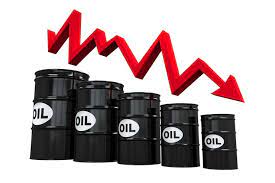Oil prices experienced a decline in early trade on Thursday following a significant increase in U.S. crude inventories, triggering concerns about demand in the world’s largest economy. Brent crude futures fell by 34 cents, or 0.4%, to $81.26 a barrel at 0135 GMT, while U.S. West Texas Intermediate crude futures dropped by 36 cents, or 0.5%, to $76.28 a barrel.
The downward trend in oil prices comes after both contracts lost more than $1 a barrel on Wednesday, impacted by a notable rise in U.S. crude inventories. The Energy Information Administration (EIA) reported that U.S. crude inventories surged by 12 million barrels to 439.5 million barrels in the week ending February 9. This substantial increase far exceeded analysts’ expectations, which had predicted a rise of 2.6 million barrels according to a Reuters poll.
The decline in refining activity to its lowest levels since December 2022 added to the downward pressure on oil prices. Despite the concerns raised by the surge in crude inventories, the EIA data also revealed a positive aspect with gasoline and distillate stocks showing unexpected declines.
Gasoline stocks fell by 3.7 million barrels to 247.3 million barrels, surpassing expectations for a 1.2 million-barrel draw. Additionally, distillate stockpiles decreased by 1.9 million barrels to 125.7 million barrels, compared to expectations for a 1.6 million-barrel drop.
As global markets closely monitor the dynamics of oil inventories and demand, the recent data has prompted fluctuations in oil prices. Investors and analysts will continue to assess the impact of these factors on the energy market, considering both the challenges posed by rising crude inventories and the positive signs of declining gasoline and distillate stocks.















